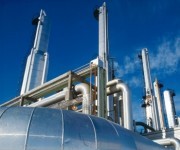In Finland, around the globe, and in every state, the nuclear industry makes people sing the same old song: “What do you get when you buy a nuke? You get a lot of delays and rate increases….”
This year, authorities permitted Florida Power & Light to start charging millions of customers several dollars a month to finance four new reactors. Customers of Georgia Power, a subsidiary of the Southern Co., will pay on average $1.30 a month more in 2011, rising to $9.10 by 2017, to help pay for two reactors expected to go online in 2016 or later.
Secure · Tax deductible · Takes 45 SecondsSecure · Tax deductible · Takes 45 Seconds
As an aside, if Public Utility Commissions allowed on-bill financing of energy efficiency, which is under half the cost of any new power generation — and 5 times cheaper than new nukes — we could stop electricity demand growth in this country for two decades while lowering consumer electric bills by tens of billions of dollars a year (see “Energy efficiency is THE core climate solution, Part 1: The biggest low-carbon resource by far” and “Part 3: The only cheap power left“).
Back to the delays and high cost of new nukes. It isn’t just this country (see “Turkey’s only bidder for first nuclear plant offers a price of 21 cents per kilowatt-hour“), and, of course, Finland — see my February post, “Nuclear meltdown in Finland” and today’s remarkable New York Times story (excerpted above):
In Finland, Nuclear Renaissance Runs Into Trouble
As the Obama administration tries to steer America toward cleaner sources of energy, it would do well to consider the cautionary tale of this new-generation nuclear reactor site.
The massive power plant under construction on muddy terrain on this Finnish island was supposed to be the showpiece of a nuclear renaissance. The most powerful reactor ever built, its modular design was supposed to make it faster and cheaper to build. And it was supposed to be safer, too.
But things have not gone as planned.
After four years of construction and thousands of defects and deficiencies, the reactor’s 3 billion euro price tag, about $4.2 billion, has climbed at least 50 percent. And while the reactor was originally meant to be completed this summer, Areva, the French company building it, and the utility that ordered it, are no longer willing to make certain predictions on when it will go online.
What’s laughable is that the Republican Party, in a weekly radio address last month (video and transcript here), has now made nuclear power a centerpiece of their “clean energy” strategy, with Senator Lamar Alexander (R-TN) absurdly claiming:
When Republicans say, build 100 new nuclear power plants during the next twenty years, Democrats say, no place to put the used nuclear fuel…. We say, keep prices down.
And he did that with a straight face!
When conservatives say build 100 new nukes in 20 years, I don’t even consider the waste issue among the first three things I’d bring up in responding to an idea guaranteed to raise everyone’s rates 25% or more, sacrifice safety for speed of construction — with taxpayers on the hook to cover the cost of any major nuclear disaster — and require taxpayers to take on nearly a trillion dollars of risk (see “Exclusive analysis, Part 1: The staggering cost of new nuclear power“ and “How did $50B high-risk, job-killing nuclear loans get in the stimulus? Fraudulent budget gimmickry“).
As the chairman of the Federal Energy Regulatory Commission, Jon Wellinghoff, said recently of new coal and nuclear plants, “We may not need any, ever.” We simply have too many superior lower cost clean energy alternatives.
And that’s why the NYT energy and environmental blog poses the question today: Is the Nuclear ‘Renaissance’ Fizzling?
Nuclear power may be making a comeback, but long-standing problems with the technology still could lead to canceled orders and renewed public opposition.
One problem is what to do with the highly dangerous waste produced by reactors. Currently waste is stored above ground in pools of water or in vast dry casks, but neither of those methods is regarded as adequate over the long-term.
The other problem is timing. We need to reverse our greenhouse gas emissions trend immediately, whereas nukes — notwithstanding GOP fantasies — are not a near-term strategy.
And even if stars do come into alignment for nuclear, it still could take some time for it to play a significant role in lowering greenhouse gas levels, according to Paul L. Joskow, a professor or economics and management at M.I.T. and the president of the Alfred P. Sloan Foundation, a philanthropic organization supporting science and technology.
Mr. Joskow co-authored an influential report on the future of nuclear power in 2003.
“If nuclear is going to be a large wedge in the overall portfolio of technologies cutting greenhouse gases, then it’s going to be a post-2025 wedge,” Mr. Joskow said in a telephone interview last week. “In the near term, we are going to be using more energy efficiency measures, renewable sources and even cleaner burning natural gas to meet our climate goals,” he said.
And Joskow, for those who follow the energy issue closely, is not progressive and historically has not been an advocate for efficiency — and yet even he understands nukes are at best a medium-term strategy.
Related Posts:
- Nuclear power, Part 2: The price is not right
- Nukes, Part 1.5: Nuclear Bomb
- The Self-Limiting Future of Nuclear Power, Part 1
- How much of a subsidy is the Price-Anderson Nuclear Industry Indemnity Act?
- Obama knows nukes, Planet Gore knows nothing
- Power plants costs double since 2000 — Efficiency anyone?
- Nuclear storage at Yucca jumps 38% — to $96B
- Nuclear Pork — Enough is Enough



